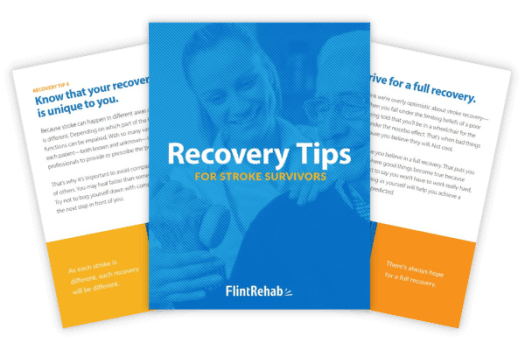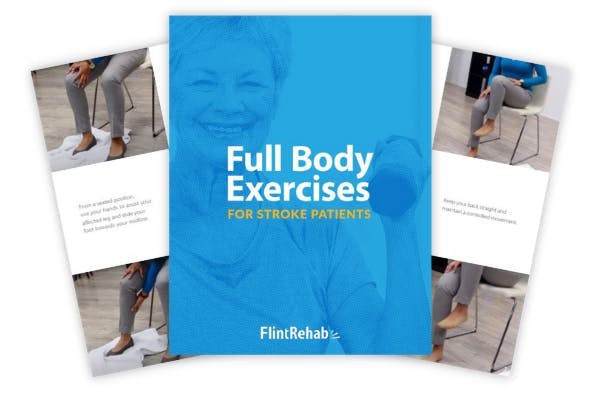No products in the cart.
No products in the cart.
No products in the cart.
No products in the cart.
Home » Neurological Recovery Blog » Stroke » Coffee and Stroke Risk: Comparing the Benefits & Drawbacks
Last updated on March 14, 2024

Studies examining the link between coffee and stroke have had mixed results. While most of the evidence seems to indicate that coffee can actually help reduce the risk of stroke, it may not be ideal for everyone.
This article will explain the benefits and drawbacks of drinking coffee to prevent stroke. A few coffee alternatives that can also reduce stroke risk will also be discussed.
There is an abundance of research that indicates that coffee consumption and stroke are inversely related. In other words, the more coffee a person drinks, the lower their risk of stroke.
For example, a 2021 systematic review and meta-analysis examining the relationship between coffee and stroke in 2.4 million people found that individuals with higher coffee consumption levels had a lower risk of stroke. The optimal amount of coffee consumption was found to be 3-4 cups per day, which reduced the risk of stroke by 21 percent.
Individuals who drank less than 3 cups of coffee per day still had a lower stroke risk than those who did not drink any coffee. However, drinking more than 3-4 cups of coffee per day did not enhance the preventative effects.
Another 2021 meta-analysis found that, while coffee consumption reduced the risk of both ischemic and hemorrhagic stroke, it had a greater effect in ischemic stroke prevention. This study also reported that coffee consumption can reduce the risk of experiencing diabetes, obesity, and atherosclerosis (plaque buildup in the arteries), conditions which may increase the risk of stroke.
Therefore, the research seems to indicate that coffee can be beneficial for individuals after stroke. However, there are some important caveats.
Although coffee contains many benefits, it is not suitable for everyone. There are some drawbacks to drinking coffee, as some studies have suggested that coffee may increase the risk of high cholesterol or hypertension.
While drinking moderate amounts of filtered coffee does not generally affect cholesterol levels, long-term heavy coffee consumption (more than 6 cups of coffee per day), may lead to high cholesterol. Therefore, it is usually recommended to avoid drinking excessive amounts of coffee on a regular basis.
The link between coffee and hypertension has been highly debated, with many studies reporting that regularly drinking coffee can actually lower the risk of hypertension. However, according to a 2023 study by the American Heart Association, drinking more than 2 cups of coffee per day was associated with an increased risk of cardiovascular disease-related mortality in those with severe hypertension. Coffee did not have this affect among those with normal blood pressure or mild hypertension.
With this in mind, it may be wise for those with severe hypertension to ask their doctor about their coffee consumption to see if any changes are recommended. It is always best to err on the side of caution in order to manage preventable stroke risk factors.
Although many people drink filtered coffee, unfiltered coffee, such as that prepared using a French press or other boiling methods, is becoming more popular. Unfortunately, unfiltered coffee does not have many of the cardiovascular benefits that filtered coffee possesses. In fact, drinking unfiltered coffee can even increase the risk of experiencing cardiovascular problems.
While filtered coffee is associated with lower mortality rates, drinking unfiltered coffee leads to higher mortality rates due to stroke and other cardiovascular-related causes than drinking no coffee at all. Unfiltered coffee may also increase LDL “bad” cholesterol levels, while filtered coffee has properties that decrease cholesterol buildup.
While filtered coffee and stroke are positively linked for most people, these benefits may be undone if additives are mixed in. When coffee is loaded with processed sugar and creamers, it may create more problems.
Sugar and artificial sweeteners actually can increase the risk of stroke, which negates the benefits of drinking coffee in the first place. Therefore, to gain the most benefits, try drinking black filtered coffee. If that doesn’t sound appealing, there is still good news: there are alternatives with similar health benefits available.
One of the best alternatives to coffee is green tea. This caffeinated drink has many of the same properties as coffee, and has also been associated with a decreased risk of stroke.
Drinking 2-4 cups of green tea per day can reduce the risk of stroke by more than 20%. Furthermore, drinking up to 4-6 cups of a combination of coffee and green tea can also reduce stroke risk, particularly for ischemic stroke.
Many of the benefits of coffee and green tea reside in their potent antioxidants. These compounds help fight free radicals, which are harmful molecules linked to the development of atherosclerosis. Since atherosclerosis and stroke are closely connected, antioxidants play an important role in stroke prevention.
Coffee is packed with antioxidants, but there are many other antioxidant-rich foods, including:
Often the foods richest in antioxidants are also brightly colored, so focusing on a colorful diet or “eating the rainbow” may be a good way to consume more antioxidants. Whether choosing to consume more coffee, green tea, antioxidant-rich foods, or a combination of these, it is always best to talk with one’s doctor before making major dietary changes.
Drinking filtered black coffee in moderation can reduce stroke risk and boost antioxidant intake. Therefore it is generally considered a safe and positive practice for stroke prevention.
To avoid the harmful effects of added cream, sugar, and other sweeteners, individuals should opt for black coffee most of the time. However, those with severe hypertension would do better to avoid coffee altogether. For those who choose not to drink coffee, drinking green tea and eating antioxidant-rich foods may also be beneficial to lower the risk of stroke.
Learning more about the link between coffee and stroke can help individuals make more informed and healthy decisions. Consider talking with a doctor or dietician for more personalized advice regarding how coffee and other foods may help prevent stroke.

Get our free stroke recovery ebook by signing up below! It contains 15 tips every stroke survivor and caregiver must know. You’ll also receive our weekly Monday newsletter that contains 5 articles on stroke recovery. We will never sell your email address, and we never spam. That we promise.


Do you have these 25 pages of rehab exercises?
Get a free copy of our ebook Full Body Exercises for Stroke Patients. Click here to get instant access.
“My name is Monica Davis but the person who is using the FitMi is my husband, Jerry. I first came across FitMi on Facebook. I pondered it for nearly a year. In that time, he had PT, OT and Speech therapy, as well as vision therapy.
I got a little more serious about ordering the FitMi when that all ended 7 months after his stroke. I wish I hadn’t waited to order it. He enjoys it and it is quite a workout!
He loves it when he levels up and gets WOO HOOs! It is a wonderful product! His stroke has affected his left side. Quick medical attention, therapy and FitMi have helped him tremendously!”
FitMi is like your own personal therapist encouraging you to accomplish the high repetition of exercise needed to improve.
When you beat your high score or unlock a new exercise, FitMi provides a little “woo hoo!” as auditory feedback. It’s oddly satisfying and helps motivate you to keep up the great work.
In Jerry’s photo below, you can see him with the FitMi pucks below his feet for one of the leg exercises:
Many therapists recommend using FitMi at home between outpatient therapy visits and they are amazed by how much faster patients improve when using it.
It’s no surprise why over 14,000 OTs voted for FitMi as “Best of Show” at the annual AOTA conference; and why the #1 rehabilitation hospital in America, Shirley Ryan Ability Lab, uses FitMi with their patients.
This award-winning home therapy device is the perfect way to continue recovery from home. Read more stories and reviews by clicking the button below:
Grab a free rehab exercise ebook!
Sign up to receive a free PDF ebook with recovery exercises for stroke, traumatic brain injury, or spinal cord injury below: